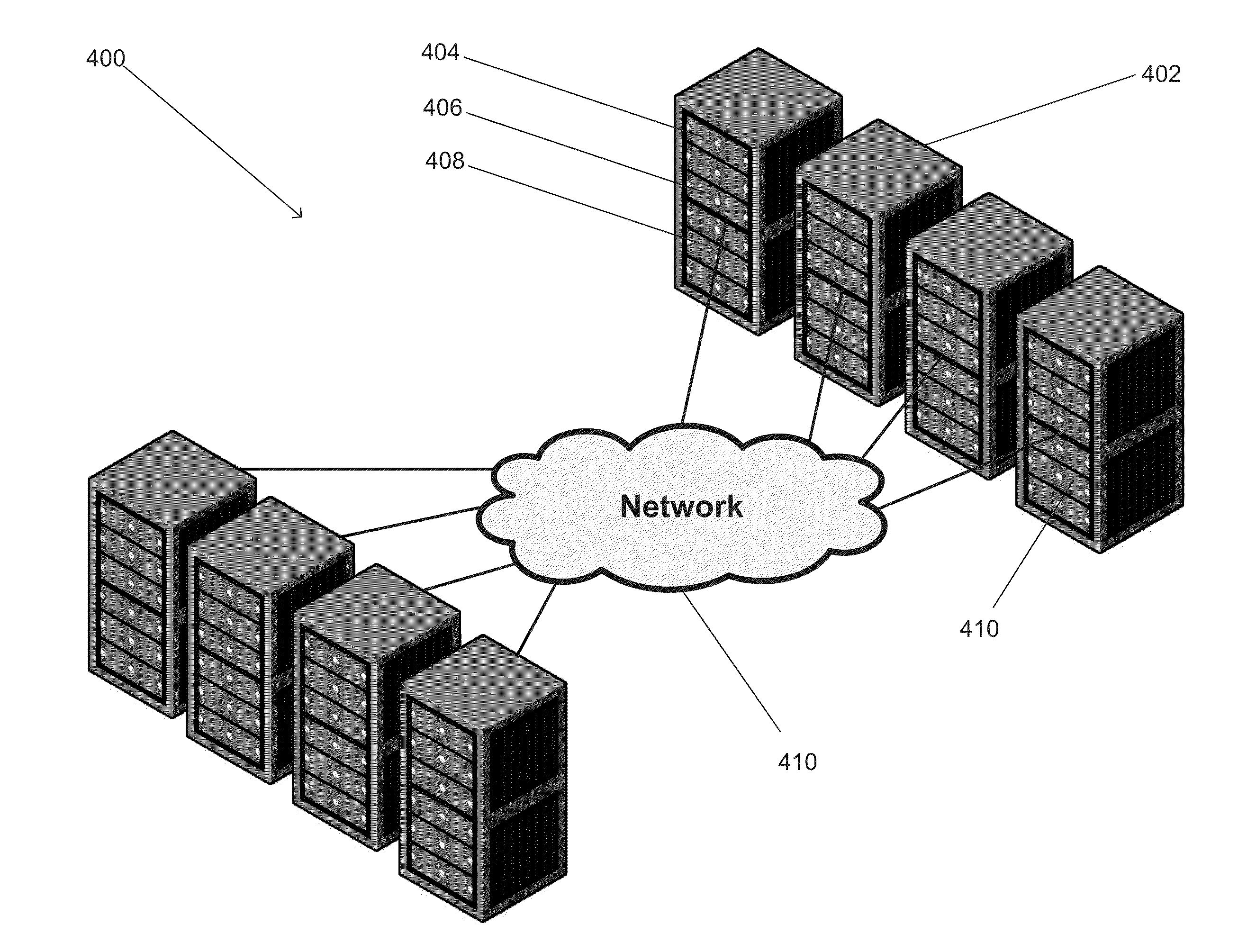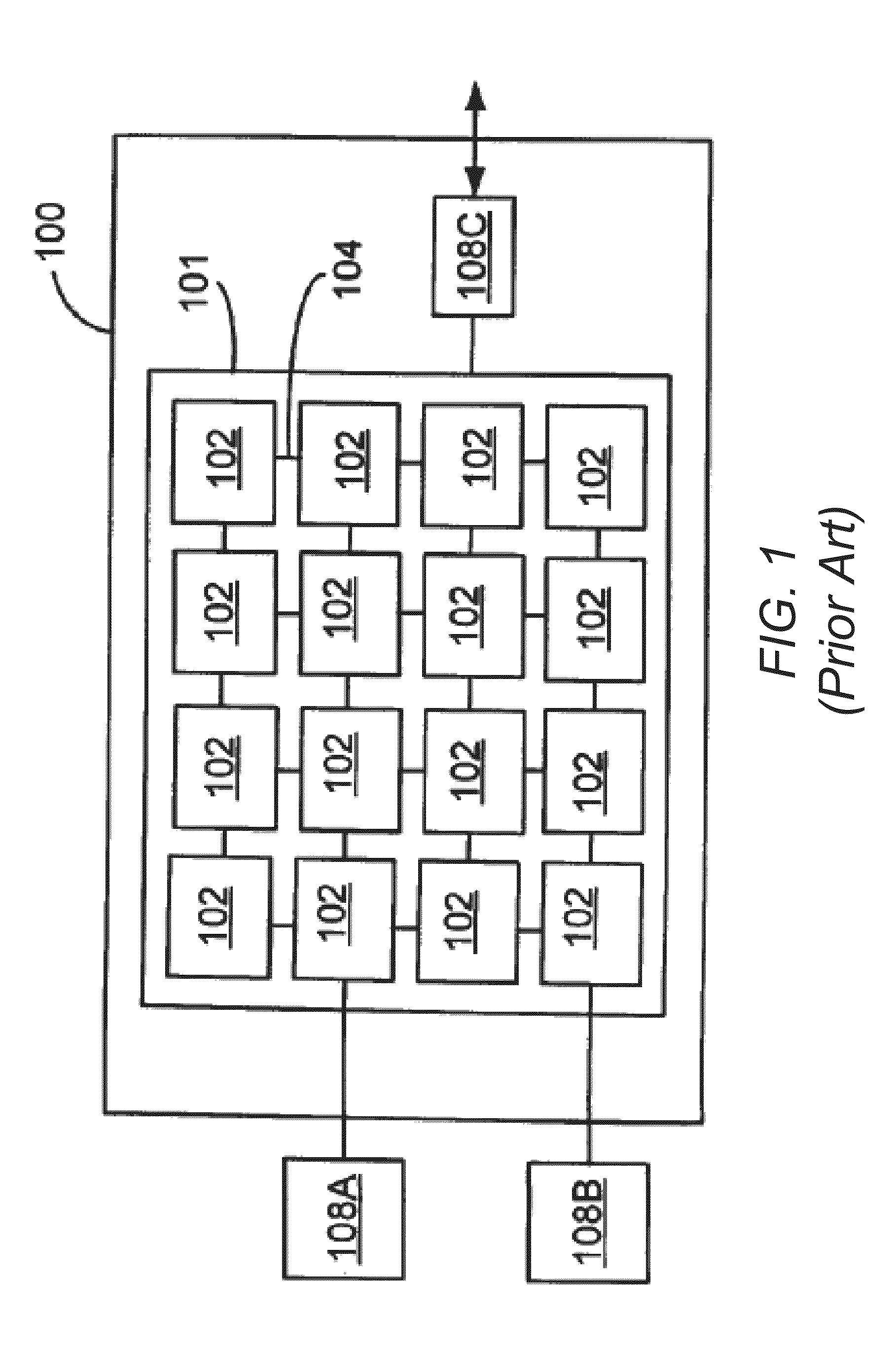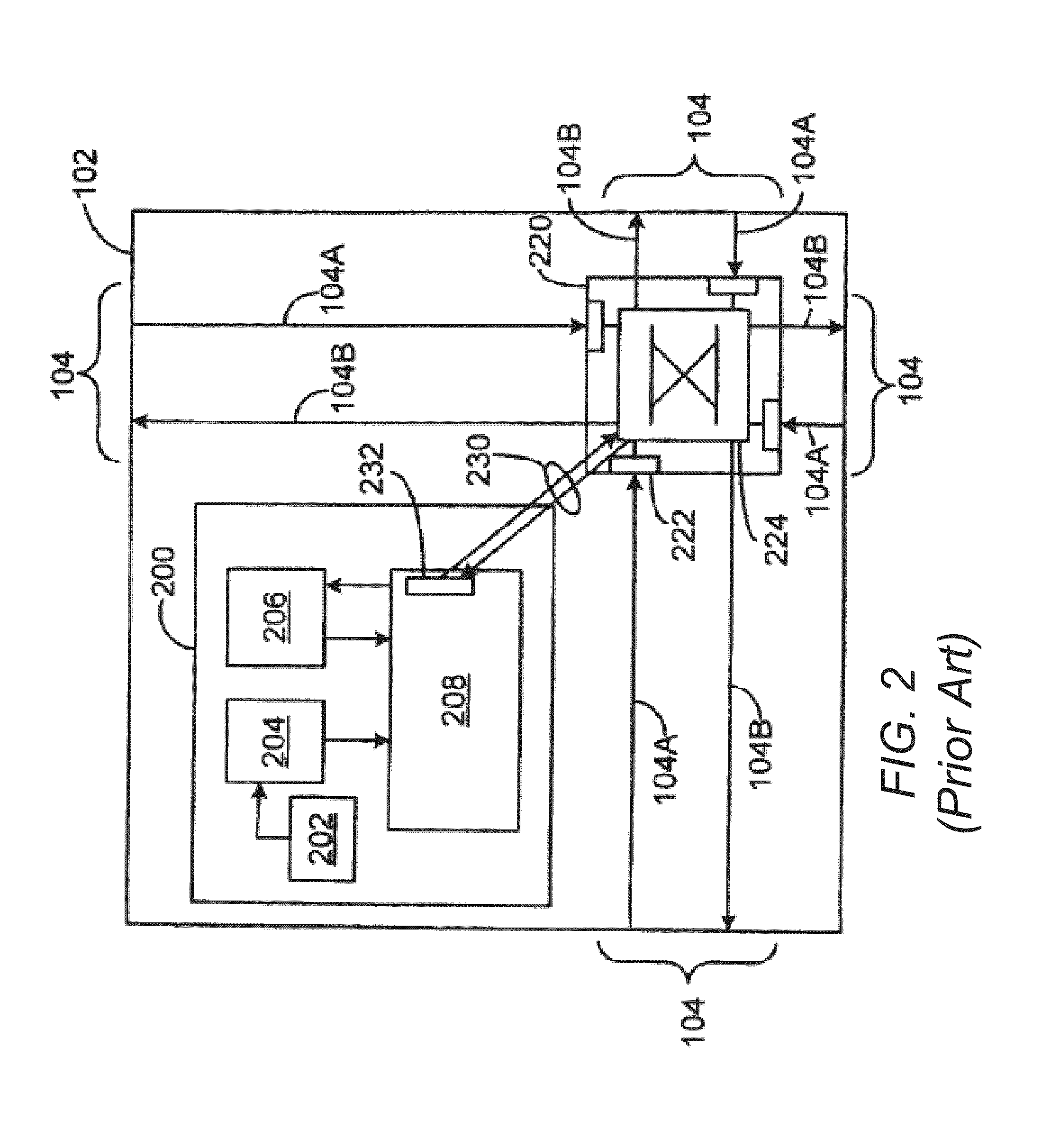Systems and methods for implementing distributed databases using many-core processors
a distributed database and processor technology, applied in the field of distributed databases, can solve the problems of heat limitation, heat expulsion, intolerant to heat, etc., and achieve the effect of low power retrieval and rapid data retrieval
- Summary
- Abstract
- Description
- Claims
- Application Information
AI Technical Summary
Benefits of technology
Problems solved by technology
Method used
Image
Examples
Embodiment Construction
[0030]Description will now be given of the invention with reference to the attached FIGS. 1-12. It should be understood that these figures are exemplary in nature and in no way serve to limit the scope of the invention as the invention will be defined by the claims, as interpreted by the Courts in an issued US patent.
[0031]A conceptual illustration of a many-core processor currently in existence is illustrated in FIG. 1, which shows an integrated circuit 100 (or “chip”) includes an array 101 of interconnected tiles 102. Each of the tiles 102 includes a processor (or “processor core”) and a switch that forwards data from other tiles to the processor and to switches of other tiles over data paths 104. In each tile, the switch is coupled to the processor so that data can be sent to or received from processors of other tiles over the communication fabric formed by the switches and data paths. The integrated circuit 100 includes other on-chip circuitry such as input / output (I / O) interfac...
PUM
 Login to View More
Login to View More Abstract
Description
Claims
Application Information
 Login to View More
Login to View More - R&D
- Intellectual Property
- Life Sciences
- Materials
- Tech Scout
- Unparalleled Data Quality
- Higher Quality Content
- 60% Fewer Hallucinations
Browse by: Latest US Patents, China's latest patents, Technical Efficacy Thesaurus, Application Domain, Technology Topic, Popular Technical Reports.
© 2025 PatSnap. All rights reserved.Legal|Privacy policy|Modern Slavery Act Transparency Statement|Sitemap|About US| Contact US: help@patsnap.com



